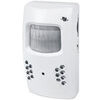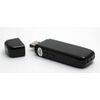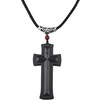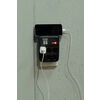Covert operations have often been the subject of popular novels, films, TV series, comics, etc. The Company is a fictional covert organization featured in the American television drama/thriller series Prison Break. In a covert operation, the identity of the sponsor is concealed, while in a clandestine operation the operation itself is concealed. Put differently, clandestine means “hidden,” while covert means “deniable”. The term stealth refers both to a broad set of tactics aimed at providing and preserving the element of surprise and reducing enemy resistance and to a set of technologies ( stealth technology ) to aid in those tactics. While secrecy and stealthiness are often desired in clandestine and covert operations, the terms secret and stealthy are not used to formally describe types of missions.
According to the U.S. Department of Defense Dictionary of Military and Associated Terms, a covert operation (also as CoveOps or covert ops ) is “an operation that is so planned and executed as to conceal the identity of or permit plausible denial by the sponsor.” It is intended to create a political effect which can have implications in the military, intelligence or law enforcement arenas. Covert operations aim to fulfill their mission objectives without any parties knowing who sponsored or carried out the operation.
Look around the web today and you’ll see a whole pile of articles telling compact camera makers how worried they should be about the imaging capabilities of the new iPhone 4S. To an extent, it’s true. The iPhone camera has already showed how powerful it is when it comes to sheer volume of images created with it. Now it’s time for it to start catching up in quality. We’ll still take a dedicated camera over a cell phone camera every time. But, the difference isn’t what it once was.
Picture sharing has also made us more aggressive in situations in which we feel insecure, such as in the presence of celebrities. Susan Sontag described the essentially hostile nature of taking pictures as a form of “soft” murder. In the age of cell phones, this scalp-hunting sensibility is achieving full flower. Let’s say you’re in Asbury Park and you see Bruce Springsteen with his kids. The old impulse would have been to ask the Boss if you could take your picture with him. The new impulse is to snap the shot with a cell phone camera and sell it to a site like Scoopt . No wonder famous people don’t want to hang out with us.
The cell phone technology is similar. The camera phone takes digital images of the front and the back of the check and transmits those to the bank. The bank’s computer system then reads the amount and all the important banking information it needs to make the deposit, such as the routing number, the check writer’s account number, and check number. It also checks the image of the back of the check to verify your signature. The information is encrypted scrambled to prevent hackers from getting it during transmission.
The cameras in cell phones just keep getting better and better. Features like autofocus, flash, and high-resolution image sensors have made grainy, unfocused, washed-out cell-phone shots largely a thing of the past. Still, they’re not up to par with dedicated digital cameras, that come equipped with larger image sensors and features like optical image stabilization. And all cell-phone cameras aren’t created equal. For example, the Apple iPhone 4 offers 5-megapixel captures, while the inexpensive Samsung Contour SCH-R250 can only deliver tiny 0.3-megapixel VGA-quality photos? that’s like shooting pictures with a webcam.
The cell phone camera, constant companion, has also been championed as an anti-crime device. There have been several Rodney King moments, with bystanders pulling out their cameras to record sketchy police activity. One woman took a shot of a flasher on a New York subway, a photo that ended up on the cover of the New York Post the next day. There is also a mini-boom in sites to catch people who park like idiots , stare too long , and mistreat your kids.
 Cell phones have dramatically changed modern life, especially with the addition of cameras, Web browsers, GPS, and other features. But even more than their increasingly sophisticated capabilities, the fundamental cultural power of cell phones comes from the fact that so many people have them. If they were simply a novelty, confined to a small circle of technology lovers, our world would be a lot different (and barely imaginable for people under 25). The Lawmate Cellphone Hidden Camera w/HD Recording is the Best & Most Hi-Def Cell Phone Spy Camera in the world. Just check in the demo video below to see how good this covert spy cameras records. It’s perfect for any law enforcement covert mission.
Cell phones have dramatically changed modern life, especially with the addition of cameras, Web browsers, GPS, and other features. But even more than their increasingly sophisticated capabilities, the fundamental cultural power of cell phones comes from the fact that so many people have them. If they were simply a novelty, confined to a small circle of technology lovers, our world would be a lot different (and barely imaginable for people under 25). The Lawmate Cellphone Hidden Camera w/HD Recording is the Best & Most Hi-Def Cell Phone Spy Camera in the world. Just check in the demo video below to see how good this covert spy cameras records. It’s perfect for any law enforcement covert mission.
With the way cell phones have ingrained themselves in today’s society all around the world, no one even thinks twice about them. Of course most phones these days have cameras built into them as well but those are obvious, what if you need something a bit more covert? That’s where our latest device, the Lawmate Cellphone Hidden Camera w/HD Recording, comes into play.
With a camera hidden in the top of the phone you can walk around pretending to text message or even set the phone down on a table or counter and record everything that happens without anyone having even the slightest idea.
The Included belt holster makes it easier than ever to covertly record when in sensitive situations. The included HDMI cable makes it easy for you to quickly connect the Lawmate Cellphone Hidden Camera to any HDMI equiped television to review your recorded photos and videos; no computer required!
| New Products | |
| Top Featured Products | |
 Motion Detector Alarm Color Hidden Camera With Built-In DVR - Mini Alarm DVR with PIR Detection & Motion Detection The PIR MOTION DETECTOR HIDDEN CAMERA with built-in DVR is the best on the market. It doesn't just look... Motion Detector Alarm Color Hidden Camera With Built-In DVR Motion Detector Alarm Color Hidden Camera With Built-In DVR - Mini Alarm DVR with PIR Detection & Motion Detection The PIR MOTION DETECTOR HIDDEN CAMERA with built-in DVR is the best on the market. It doesn't just look... Motion Detector Alarm Color Hidden Camera With Built-In DVR |
 SecureShot 1080p High-Def Electrical Box Hidden Camera/DVR w/NightVision - This ultimate electrical box SecureShot DVR offers features others only imagine. Our 940nm invisible IR illuminator array records in total darkness... SecureShot 1080p High-Def Electrical Box Hidden Camera/DVR w/NightVision SecureShot 1080p High-Def Electrical Box Hidden Camera/DVR w/NightVision - This ultimate electrical box SecureShot DVR offers features others only imagine. Our 940nm invisible IR illuminator array records in total darkness... SecureShot 1080p High-Def Electrical Box Hidden Camera/DVR w/NightVision |
 USB Camstick Spy Camera w/Night Vision - The CamstickNV looks and functions like an ordinary flash drive. Yet this storage device conceals a DVR capable of recording both audio and quality color video.Motion activation mod... USB Camstick Spy Camera w/Night Vision USB Camstick Spy Camera w/Night Vision - The CamstickNV looks and functions like an ordinary flash drive. Yet this storage device conceals a DVR capable of recording both audio and quality color video.Motion activation mod... USB Camstick Spy Camera w/Night Vision |
 SecureShot First Alert Smoke Detector Camera/DVR w/NightVision & 1 Year Battery - Our SecureShot Full High Definition 1080P Smoke Detector w/ 1 Year Standby Battery Camera/DVR is MADE IN USA. It features Amazing 1080P Full... SecureShot First Alert Smoke Detector Camera/DVR w/NightVision & 1 Year Battery SecureShot First Alert Smoke Detector Camera/DVR w/NightVision & 1 Year Battery - Our SecureShot Full High Definition 1080P Smoke Detector w/ 1 Year Standby Battery Camera/DVR is MADE IN USA. It features Amazing 1080P Full... SecureShot First Alert Smoke Detector Camera/DVR w/NightVision & 1 Year Battery |
 Cross Hidden Spy Camera w/Built in DVR - The Cross Hidden Spy Camera with built in DVR is a tiny spy camera hidden inside a mini wearable cross. Cross Hidden Spy Camera w/Built in DVR Cross Hidden Spy Camera w/Built in DVR - The Cross Hidden Spy Camera with built in DVR is a tiny spy camera hidden inside a mini wearable cross. Cross Hidden Spy Camera w/Built in DVR |
 Bush Baby Wifi Outlet - This functional 6 plug wall outlet can support up to six devices and even comes with two functional USB ports and comes in Black or White color. With this built in hidden camera you can keep track ... Bush Baby Wifi Outlet Bush Baby Wifi Outlet - This functional 6 plug wall outlet can support up to six devices and even comes with two functional USB ports and comes in Black or White color. With this built in hidden camera you can keep track ... Bush Baby Wifi Outlet |
 Mini Phone Charger Spy Camera/DVR - Functional phone charger. Our NEW Mini Charger Spy Camera/DVR is a small but powerful device. It offers Hi-Definition 1080p recording resolution hidden discreetly inside a functional ... Mini Phone Charger Spy Camera/DVR Mini Phone Charger Spy Camera/DVR - Functional phone charger. Our NEW Mini Charger Spy Camera/DVR is a small but powerful device. It offers Hi-Definition 1080p recording resolution hidden discreetly inside a functional ... Mini Phone Charger Spy Camera/DVR |
 Bush Baby Stealth Hi-Def Outlet Spy Camera/DVR - FREE 16GB Micro SD Card - This wall adapter is perfect for just about any location. Its built-in camera on the front is positioned so that this ordinary looking object can b... Bush Baby Stealth Hi-Def Outlet Spy Camera/DVR - FREE 16GB Micro SD Card Bush Baby Stealth Hi-Def Outlet Spy Camera/DVR - FREE 16GB Micro SD Card - This wall adapter is perfect for just about any location. Its built-in camera on the front is positioned so that this ordinary looking object can b... Bush Baby Stealth Hi-Def Outlet Spy Camera/DVR - FREE 16GB Micro SD Card |
 Secureguard 4K Ultra HD WiFi Battery Powered Fire Alarm Strobe Spy Camera - - 4K Resolution Battery Powered Spy Camera This Fire Strobe is WiFi enabled with a 4K Spy camera inside.You can remotely view and control the cam... Secureguard 4K Ultra HD WiFi Battery Powered Fire Alarm Strobe Spy Camera Secureguard 4K Ultra HD WiFi Battery Powered Fire Alarm Strobe Spy Camera - - 4K Resolution Battery Powered Spy Camera This Fire Strobe is WiFi enabled with a 4K Spy camera inside.You can remotely view and control the cam... Secureguard 4K Ultra HD WiFi Battery Powered Fire Alarm Strobe Spy Camera |
 Secureguard 4K Ultra HD WiFi iPhone Dock Radio Spy Camera - Our Secureguard 4K Resolution WiFi Spy Camera is an iPhone Dock Radio with WiFi enabled with a 4K Spy camera inside.You can remotely view and control the camera ... Secureguard 4K Ultra HD WiFi iPhone Dock Radio Spy Camera Secureguard 4K Ultra HD WiFi iPhone Dock Radio Spy Camera - Our Secureguard 4K Resolution WiFi Spy Camera is an iPhone Dock Radio with WiFi enabled with a 4K Spy camera inside.You can remotely view and control the camera ... Secureguard 4K Ultra HD WiFi iPhone Dock Radio Spy Camera |
 Bush Baby 4K WiFi Two Camera Smoke Detector Spy Camera/DVR - ON SALE: $30 OFF!Are you looking for a smoke detector that covers all angles of the room? Then look no further. The Bush Baby 4K WiFi Two Camera Smoke Detector S... Bush Baby 4K WiFi Two Camera Smoke Detector Spy Camera/DVR Bush Baby 4K WiFi Two Camera Smoke Detector Spy Camera/DVR - ON SALE: $30 OFF!Are you looking for a smoke detector that covers all angles of the room? Then look no further. The Bush Baby 4K WiFi Two Camera Smoke Detector S... Bush Baby 4K WiFi Two Camera Smoke Detector Spy Camera/DVR |
 Bush Baby 4K WiFi Dog Spy Camera/DVR - The Bush Baby 4K Wi-Fi Dog is the perfect device to protect your young ones. Whether you are making sure your child is staying out of trouble or keeping an eye on the babysitter no o... Bush Baby 4K WiFi Dog Spy Camera/DVR Bush Baby 4K WiFi Dog Spy Camera/DVR - The Bush Baby 4K Wi-Fi Dog is the perfect device to protect your young ones. Whether you are making sure your child is staying out of trouble or keeping an eye on the babysitter no o... Bush Baby 4K WiFi Dog Spy Camera/DVR |

|
Be assured that your shopping experience is completely safe. The order site is secured using a Thawte SSL Web Server Certificate which encrypts all data to and from the site. However, if you prefer to pay with check or money order, just choose the off-line option when you check out. |

|















